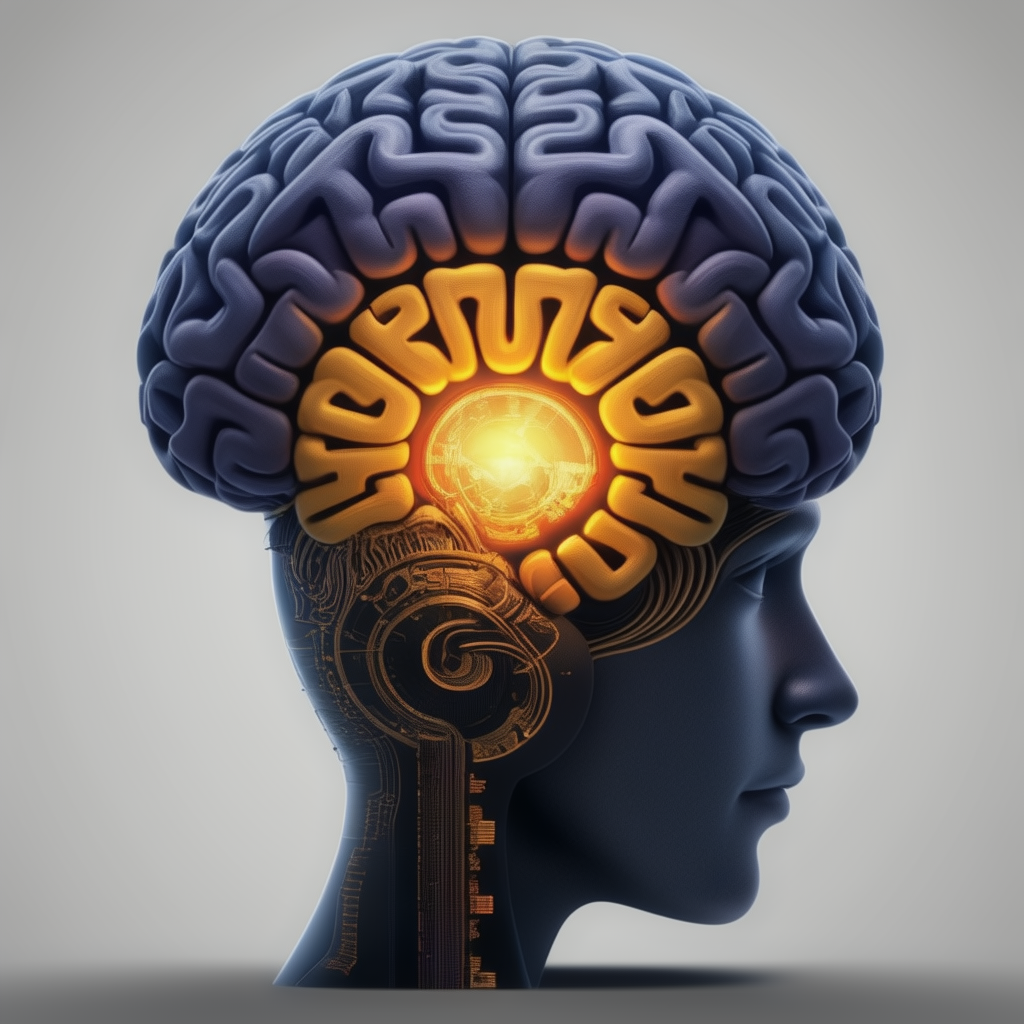Introduction
The relationship between language and thought has been a subject of debate among linguists, psychologists, and philosophers for centuries. Are our cognitive processes shaped by the language we speak, or are they independent of it? This blog post delves into the intricate dynamics between language and thought, examining theories, research findings, and real-world implications.
The relationship between language and thought is a multifaceted topic, drawing insights from neuroscience, psychology, linguistics, and evolutionary biology. This blog post explores various perspectives, including the evolutionary origins of language, the role of genetics in cognitive processes, and the historical development of languages. We will also examine whether language is merely a tool or if it fundamentally shapes our thoughts, feelings, and cognitive processes.
Evolutionary Perspectives on Language
Origins of Language
- Early Communication: The evolution of language is believed to have started with basic forms of communication among early humans. Vocalizations, gestures, and facial expressions likely preceded the development of complex language.
- Social Cohesion: Language likely evolved as a means to enhance social cohesion and cooperation within early human groups. Effective communication would have provided a survival advantage by enabling better coordination and sharing of knowledge.
Natural Selection and Language Evolution
- Survival Advantage: Natural selection may have favored individuals with better communication skills, leading to the gradual development of more complex language systems.
- Brain Development: The evolution of the human brain, particularly areas involved in speech and language (e.g., Broca’s and Wernicke’s areas), played a crucial role in the development of language.
Medical Science and Cognitive Processes
Brain Regions Involved in Language
- Broca’s Area: Located in the frontal lobe, Broca’s area is involved in speech production and grammatical processing.
- Wernicke’s Area: Located in the temporal lobe, Wernicke’s area is critical for language comprehension.
- Neural Networks: Language processing involves complex neural networks that integrate information from multiple brain regions, illustrating the intricate relationship between language and thought.
Genetics and Cognitive Processes
- Genetic Influence: Genes play a significant role in cognitive processes, including language acquisition and use. Genetic variations can affect language-related abilities, such as phonological processing and syntax comprehension.
- FOXP2 Gene: Often referred to as the “language gene,” FOXP2 is crucial for proper speech and language development. Mutations in this gene can lead to language impairments.
Role of Genetics in Thought Formation and Behavior
- Cognitive Traits: Genetic factors influence various cognitive traits, such as memory, attention, and problem-solving abilities, which are foundational for thought formation and behavior.
- Interaction with Environment: Genetics interact with environmental factors, including language exposure, to shape cognitive development and behavior.
The Development and History of Languages
Thousands of Languages
- Diverse Origins: The world’s thousands of languages have diverse origins, shaped by historical, geographical, and cultural factors. Some languages evolved from ancient proto-languages, while others emerged through contact and blending of different linguistic communities.
- Language Families: Languages are grouped into families based on common ancestry. For example, the Indo-European language family includes English, Spanish, Hindi, and many others.
Invention of Languages
- Natural Evolution: Most languages developed naturally over time, through gradual changes in phonetics, grammar, and vocabulary influenced by social interactions and cultural evolution.
- Constructed Languages: Some languages, such as Esperanto, were deliberately invented to facilitate communication or promote certain ideologies. These constructed languages often have simplified grammar and vocabulary to enhance ease of learning.
Purpose and Mindset Behind Language Creation
- Communication: The primary purpose of language is communication, enabling individuals to share information, express emotions, and coordinate actions.
- Cultural Identity: Languages also serve as a means of preserving cultural identity and heritage, reflecting the history, values, and beliefs of linguistic communities.
- Innovation and Standardization: Efforts to create or standardize languages often aim to promote literacy, education, and social cohesion.
Historical Development of Languages
Early Language Development
- Proto-Languages: Early human languages likely evolved from proto-languages, which were simpler in structure and vocabulary. These proto-languages gradually diversified into the many languages spoken today.
- Writing Systems: The invention of writing systems marked a significant milestone in the history of languages, enabling the preservation and dissemination of knowledge across generations.
Language Evolution
- Language Change: Languages continually evolve due to factors such as migration, conquest, trade, and cultural exchange. Phonetic shifts, lexical borrowing, and grammatical changes are common features of language evolution.
- Modern Linguistics: The study of linguistics has provided insights into the mechanisms of language change and the relationships between different languages, helping to reconstruct historical language developments.
Language as a Tool vs. Language Shaping Thought
Language as a Tool
- Communication: From a practical perspective, language functions as a tool for communication, allowing individuals to convey thoughts, emotions, and intentions.
- Self-Talk: Internal dialogue, or self-talk, occurs in the language one knows, serving as a tool for organizing thoughts and planning actions.
Language Shaping Thought
- Cognitive Influence: While language is a tool, it also influences cognitive processes. The structure and vocabulary of a language can affect how speakers perceive and categorize the world.
- Cultural Impact: Language shapes cultural norms and values, which in turn influence thought patterns and behaviors.
Medical Science Evidence
- Neuroscientific Studies: Neuroscientific research using neuroimaging techniques has shown that language and thought are closely linked but also exhibit distinct neural activations, suggesting both interdependence and independence.
- Psycholinguistic Research: Studies in psycholinguistics have demonstrated how different languages affect cognitive tasks, such as memory recall and problem-solving, supporting the idea of linguistic relativity.
The interplay between language and thought is a complex and dynamic relationship. While language serves as a crucial tool for communication and expression, it also shapes and is shaped by our cognitive processes, cultural experiences, and genetic factors. Understanding this intricate relationship provides valuable insights into the human mind, enhancing our appreciation of the diversity and richness of languages and thought processes around the world. By considering perspectives from evolution, medical science, genetics, and history, we gain a comprehensive understanding of how language and thought influence and interact with each other.
Theories on Language and Thought
The Sapir-Whorf Hypothesis
- Linguistic Relativity: The Sapir-Whorf Hypothesis, or linguistic relativity, posits that the language we speak influences our thought processes. According to this theory, different languages shape the way their speakers perceive and understand the world.
- Linguistic Determinism: A stronger form of this hypothesis, linguistic determinism, suggests that language determines thought, meaning that without language, certain thoughts would be impossible.
Universalism
- Independent Thought: Universalist theories argue that cognitive processes are independent of language. These theories suggest that all humans share the same cognitive abilities and that language merely labels pre-existing thoughts.
- Chomsky’s Universal Grammar: Noam Chomsky’s theory of Universal Grammar proposes that the ability to acquire language is innate to humans and that all languages share a common structural basis, which reflects universal aspects of human cognition.
Cognitive Processes Influenced by Language
Perception of Time and Space
- Temporal Concepts: Research has shown that languages with different tense structures influence how speakers perceive time. For example, Mandarin speakers, who use vertical metaphors for time, may think about time differently than English speakers, who use horizontal metaphors.
- Spatial Orientation: Languages that use cardinal directions (north, south, east, west) instead of egocentric coordinates (left, right) can affect spatial awareness. Speakers of such languages often have a heightened sense of direction.
Color Perception
- Color Categories: The way different languages categorize colors can influence perception. For instance, some languages have multiple words for what English speakers call “blue,” leading their speakers to perceive and differentiate between these colors more distinctly.
Numerical Cognition
- Counting Systems: Languages with specific counting systems can affect numerical cognition. For example, the Pirahã people of the Amazon have a limited counting system, which influences their ability to perform exact arithmetic tasks.
Evidence for Cognitive Independence from Language
Non-Verbal Thought
- Visual Thinking: Evidence from cognitive psychology suggests that people can think in images and visual representations, which do not rely on language.
- Animal Cognition: Studies on animal cognition show that many species can solve complex problems and exhibit behaviors indicating thought processes, despite lacking language.
Cognitive Development in Children
- Pre-Linguistic Thought: Infants exhibit cognitive abilities, such as object permanence and numerical understanding, before they acquire language, suggesting that some cognitive processes develop independently of language.
Neuroscientific Perspectives
Brain Lateralization
- Language and Cognition in the Brain: Neuroimaging studies reveal that language and thought processes often activate overlapping but distinct regions of the brain. This suggests that while there is interaction between language and cognition, they are not entirely dependent on each other.
Bilingualism and Cognitive Flexibility
- Cognitive Advantages of Bilingualism: Bilingual individuals often exhibit greater cognitive flexibility and better executive control, indicating that the ability to switch between languages may enhance certain cognitive functions independently of language content.
Real-World Implications
Education and Learning
- Language in Education: Understanding the relationship between language and thought can inform educational practices, such as bilingual education and teaching methodologies that leverage linguistic diversity to enhance cognitive development.
- Cognitive Training: Programs designed to improve cognitive skills can benefit from incorporating language-related exercises, especially in multilingual contexts.
Cross-Cultural Communication
- Cultural Sensitivity: Appreciating how language influences thought can foster better cross-cultural communication and understanding, as recognizing linguistic relativity can help navigate different worldviews and communication styles.
- Translation and Interpretation: Effective translation requires more than just linguistic knowledge; it demands an understanding of the cognitive and cultural contexts of both the source and target languages.
Conclusion
The relationship between language and thought is complex and multifaceted. While evidence supports both interdependence and independence, it is clear that language can shape certain cognitive processes, but it is not the sole determinant of thought. Understanding this interplay can enhance our approaches to education, cross-cultural communication, and cognitive research, ultimately enriching our appreciation of the human mind and its capabilities.







